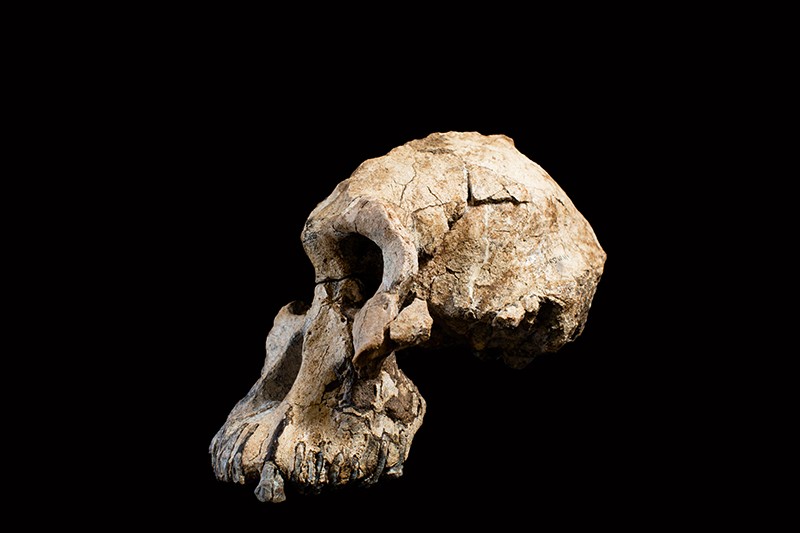Scientists have found a “remarkably complete” 3.8-million-year-old skull of an early human in Ethiopia, a discovery that challenges a previously held belief about how humans evolved.
The find, dubbed “MRD”, is considered the direct ancestor of Australopithecus afarensis, the species best known from the famous partial skeleton nicknamed Lucy unearthed in 1974 in the Afar region of Ethiopia.
The find, according to the Guardian, “dates back to a time when our ancestors were emerging from the trees to walk on two legs, but still had distinctly ape-like protruding faces, powerful jaws and small brains, and is the oldest-known member of the Australopithecus group.”
Scientists have, over the years, known about the existence of this species of hominin – A anamensis – but the discovered facial remains had been limited to jaws, a handful of teeth and some limb bones.
The newly found fossil, however, includes much of the skull and face.
“This skull is one of the most complete fossils of hominids more than three million years old,” said Yohannes Haile-Selassie, of the Cleveland Museum of Natural History and Case Western Reserve University, who led the research.
“This is a game changer in our understanding of human evolution during the Pliocene.”
Prof Fred Spoor of the Natural History Museum, London, described the Anamensis (MRD) as the “oldest-known species that is unambiguously part of the human evolutionary tree”.
There are older fossils, including Ardi, which dates to 4.4 million years, but while some scientists say those fossils are on the human lineage, others believe that they are an extinct form of ape.
The first piece of the new fossil – the upper jaw – was found in February 2016 by a “local guy” in the Afar region of Ethiopia.
“I couldn’t believe my eyes when I spotted the rest of the cranium. It was a eureka moment and a dream come true,” said Haile-Selassie at a news conference in Addis Ababa on Wednesday.

The finding changes the understanding of human evolution – in which one species disappears and is replaced by a new one.
“We thought A anamensis [MRD] was gradually turning into A afarensis [Lucy] over time,” said Stephanie Melillo of the Max Planck Institute for Evolutionary Anthropology in Germany.
MRD has, however, shown that the two species co-existed for about 100,000 years.
“Anamensis, which now spans from 4.2 million to 3.8 million years ago, is still thought to be Lucy’s ancestor, but continued to hang around after the Lucy group branched off from the parent lineage,” writes the Guardian.
Geological evidence also “suggests the landscape would have featured extremely steep hills, volcanoes, lava flows and rifts that could easily have isolated populations, allowing them to diverge.”
These divergent groups would later cross paths and compete for food and territory.










